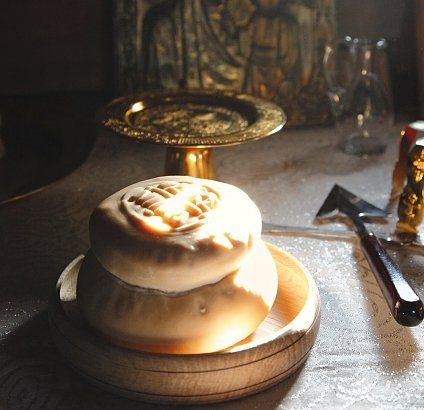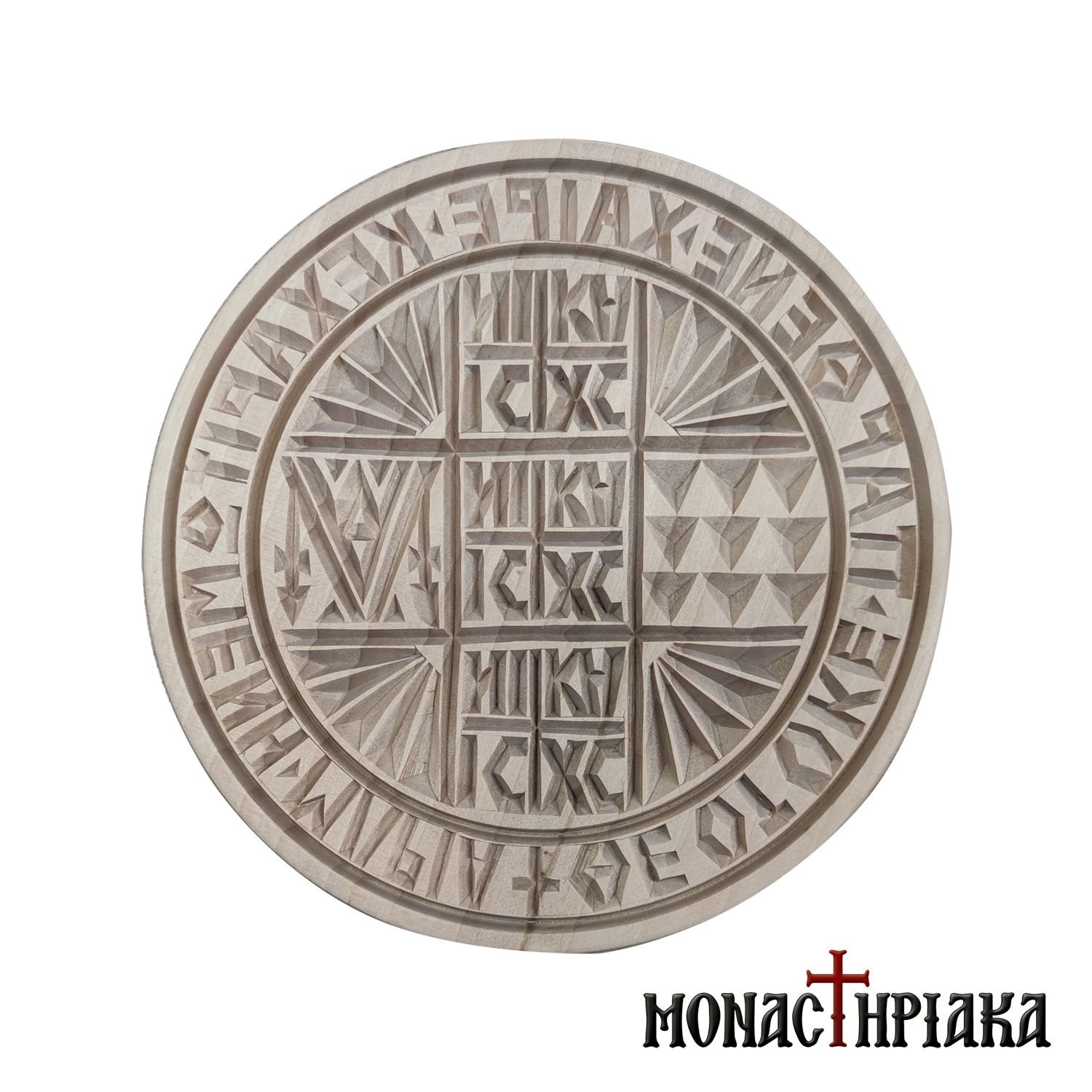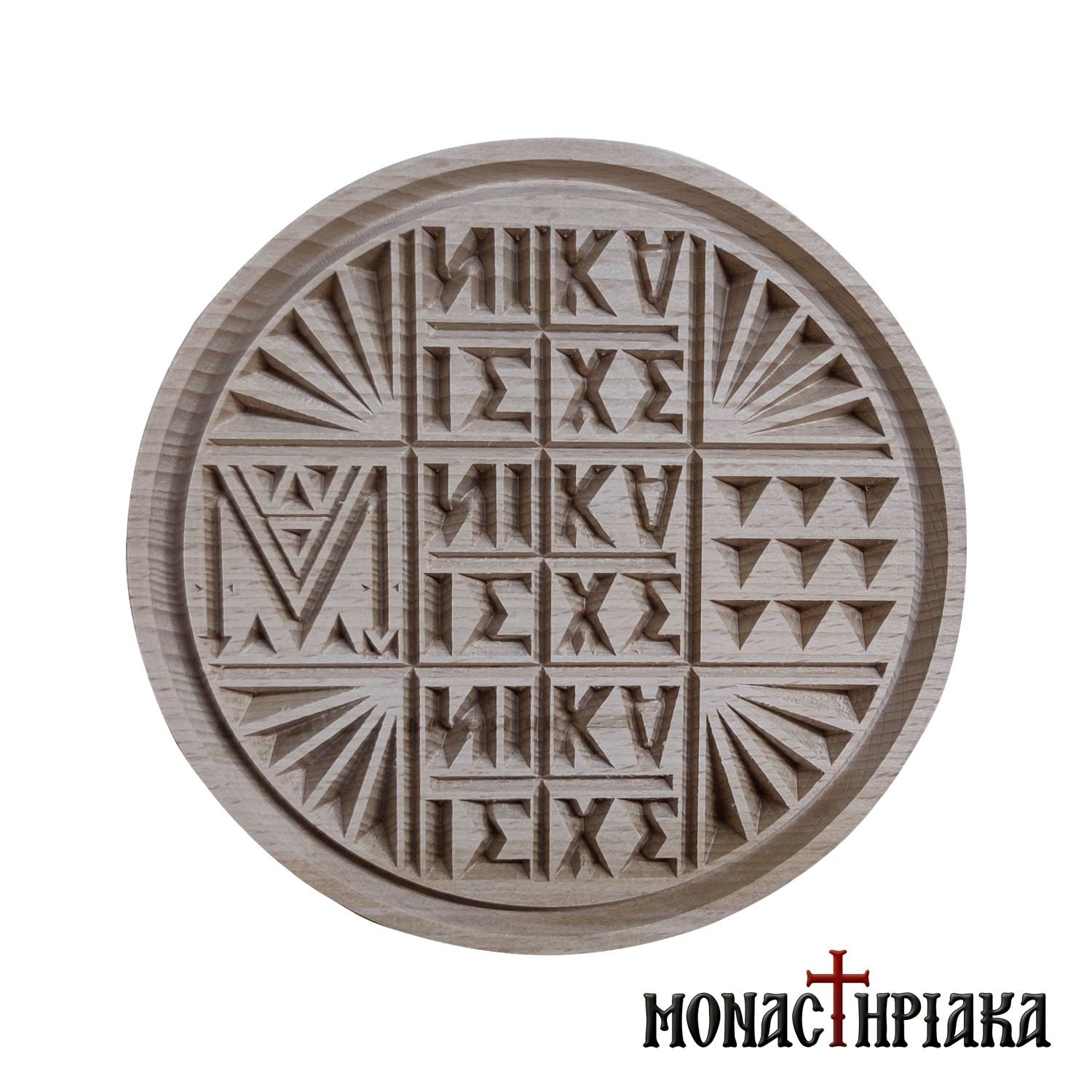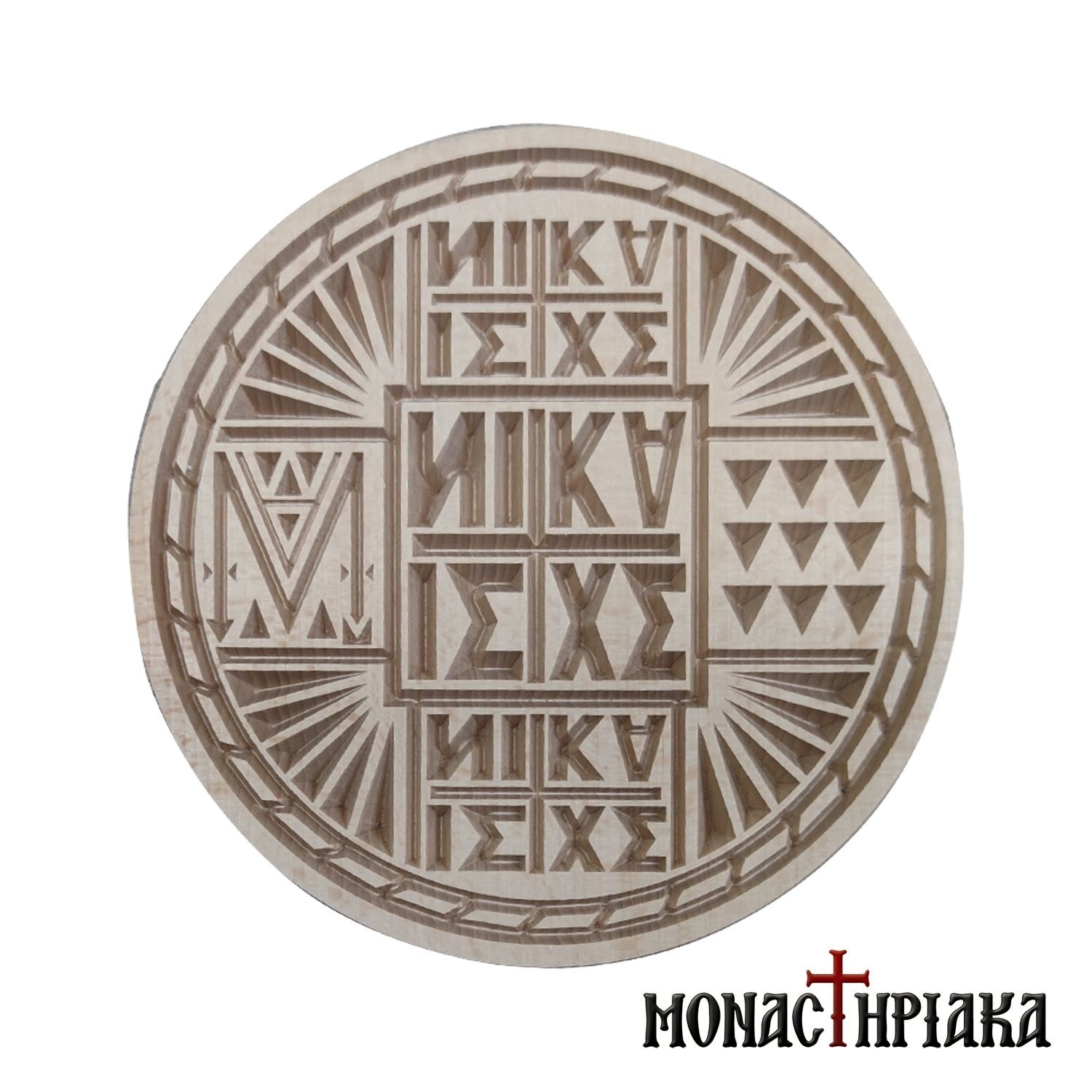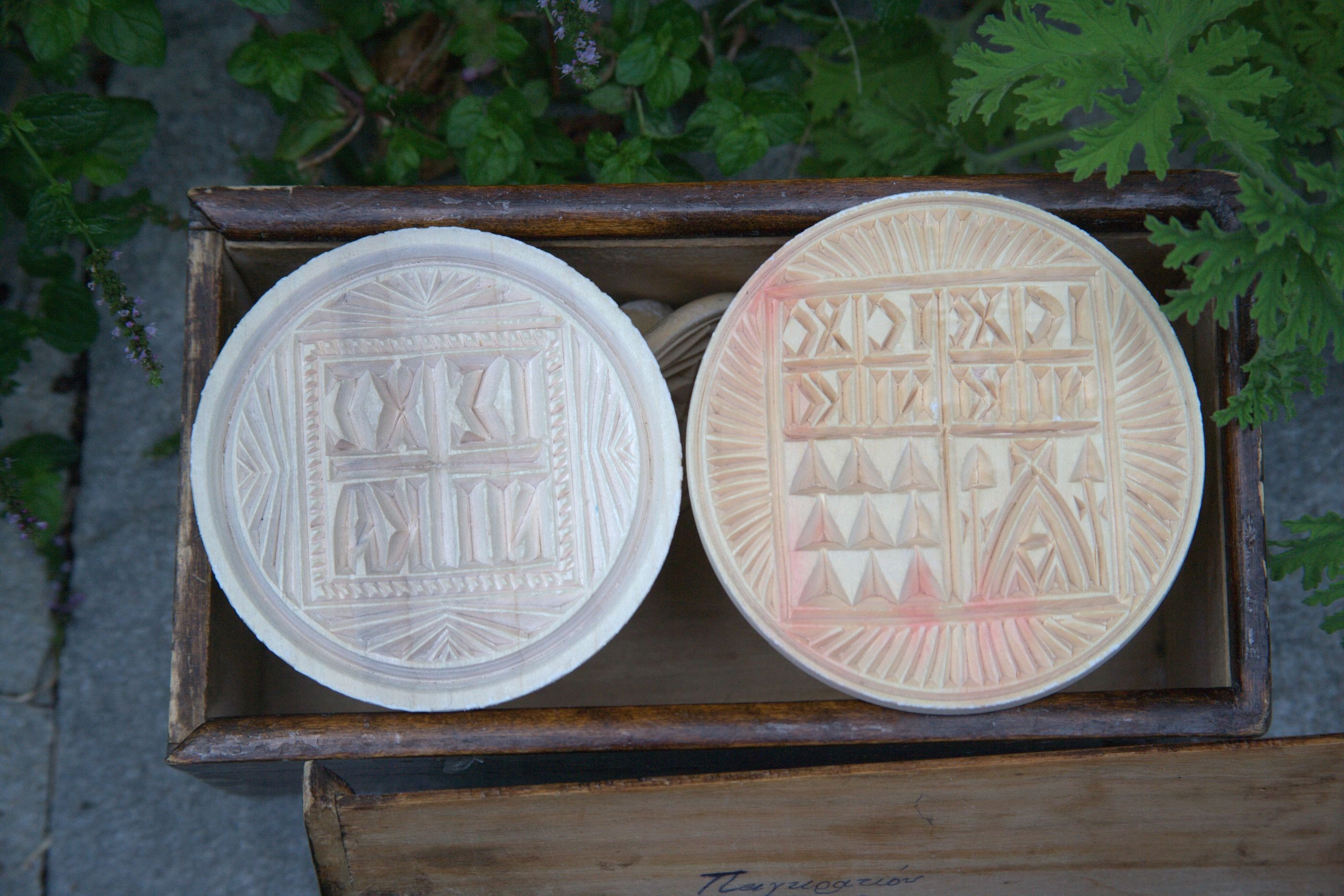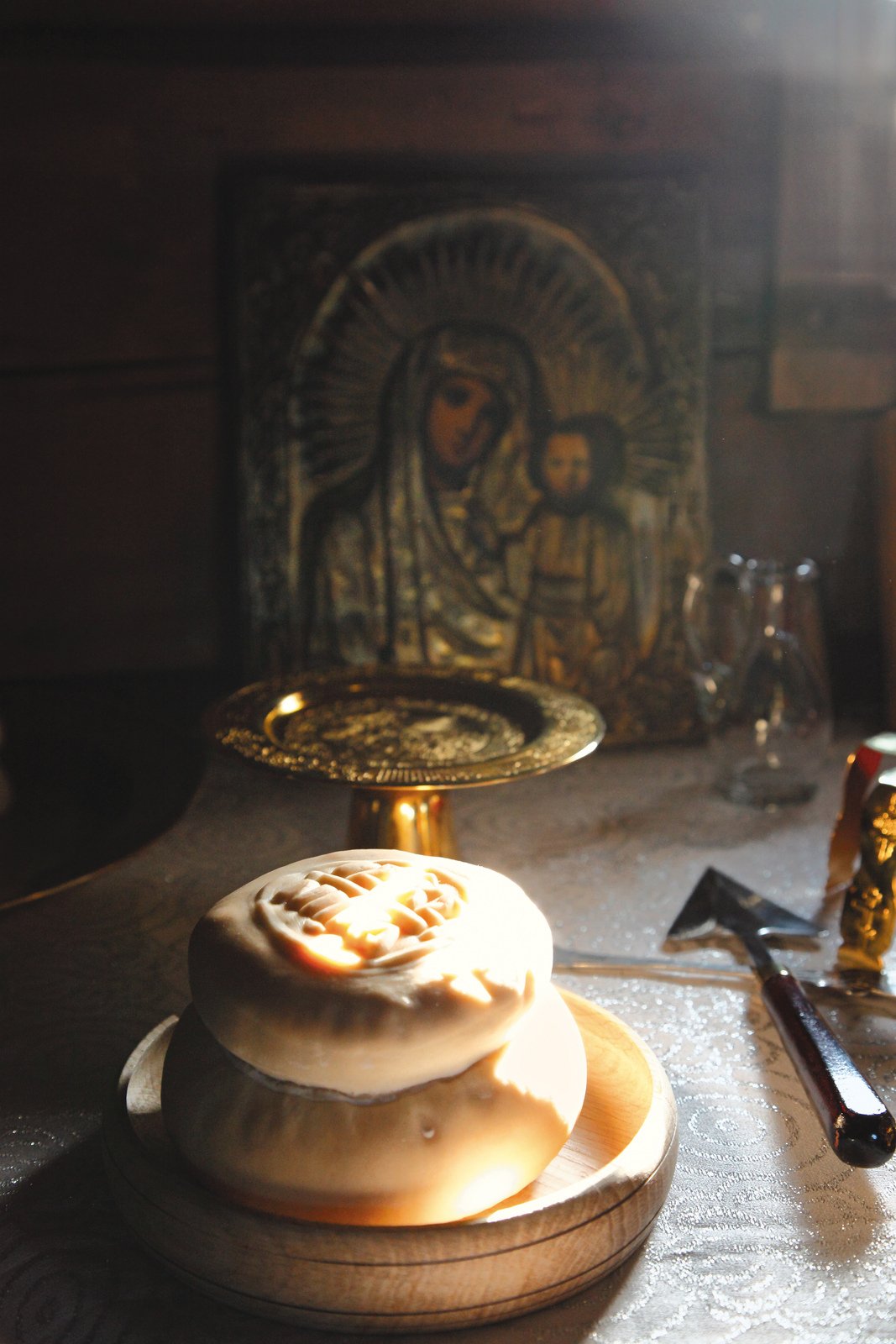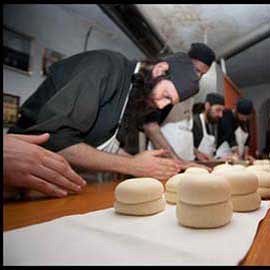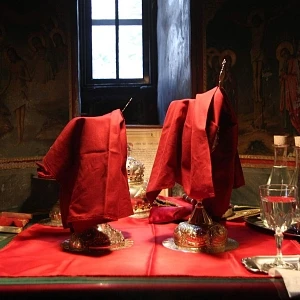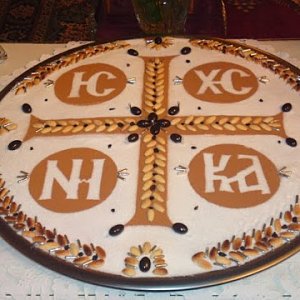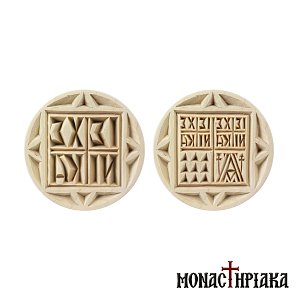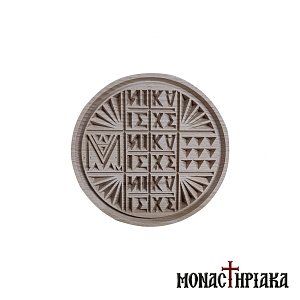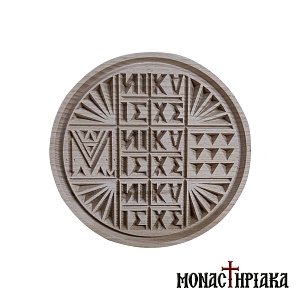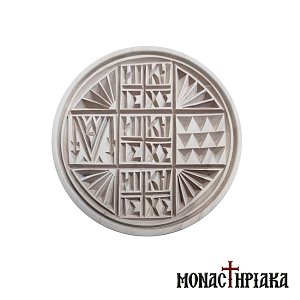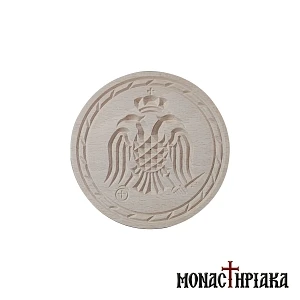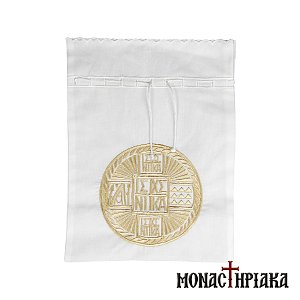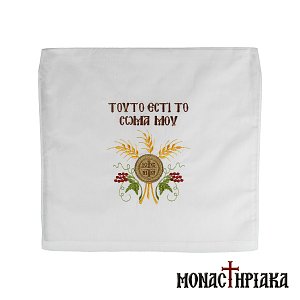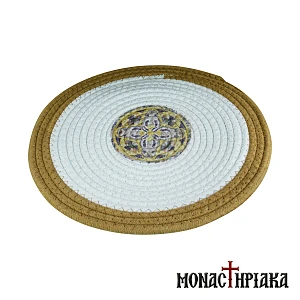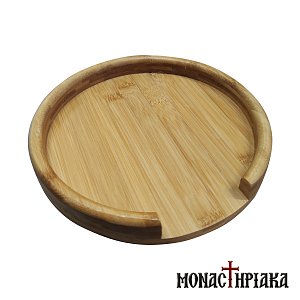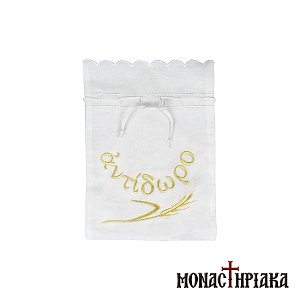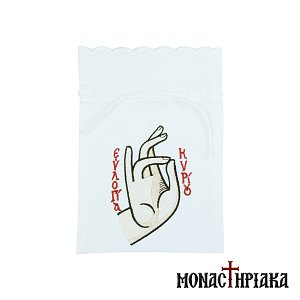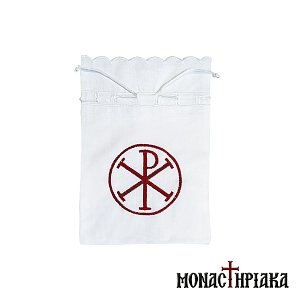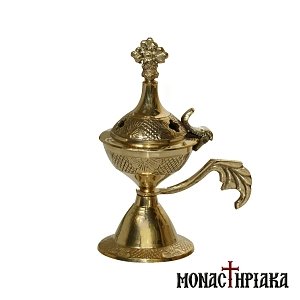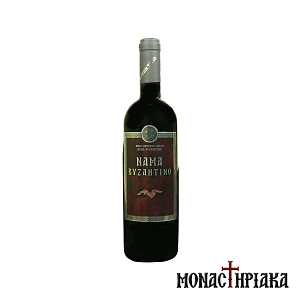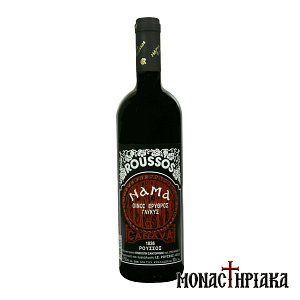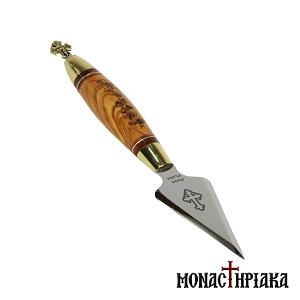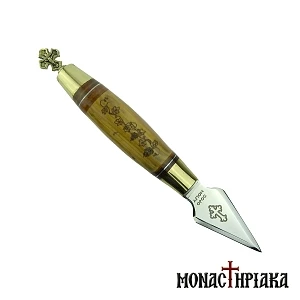What is the Offertory or Prosphora
The Offertory or Prosphora or Holy Bread is the bread offered at church for the celebration of the Holy Eucharist. The wine and the Offertory constitute the Holy Gifts, which are placed initially on the Prothesis or Oblation (from the Greek word προθέτω=προ + τίθημι).
During the Proskomide, the Holy Gifts are prepared for the celebration of the Divine Liturgy. Portions of the Offectory are placed on the Disk, while a small amount of wine is poured into the Chalice.
Symbolism of the Seal on the Offertory
The round shape of the Offectory symbolizes the womb of the Ever-Virgin Mary, from whom the Only-begotten Son was born. On the Offectory, there is an embossed design which is imprinted with a seal.
Above the seal, there is the Lamb with the inscription ΙΣ ΧΣ ΝΙΚΑ meaning Jesus Christ Conquers, which must be clearly visible. From the center of the Offectory, where the inscription is located, the Lamb of God, Jesus Christ, originates. This square portion will be used for the Holy Communion and will become the "Body of Christ."
Find here: Liturgical Lances & Chrialides for Orthodox Church Ceremony
Why Christ is called the Lamb
Jesus Christ is referred to as the Lamb because the Prophet Isaiah foretold that the Messiah would be led to sacrifice like an innocent lamb. This prophecy was confirmed by Saint John the Baptist, who pointed out the Messiah to his disciples, saying: «Look the Lamb of God» (John 1:29).
Furthermore, the Apostle Peter writes: «You were redeemed from the empty way of life... with the precious blood of Christ, a lamb without blemish or defect» (1 Peter 1:18–19).
Find here: Wooden Seals for Prosphora from Mount Athos
What is the place of Theotokos on Prosphoro
The Offectory also includes a portion dedicated to the Theotokos, bearing the greek letters Μ and Θ, which stand for "Mother of God" (in Greek Μήτηρ Θεού). This triangular portion is placed to the right of the Lamb on the Disk, accompanied by the following words:
«In honor and memory of our most holy, blessed and glorious Lady, the Theotokos and Ever-Virgin Mary, through whose intercessions, O Lord, accept this sacrifice upon Your heavenly altar»
This is followed by the 10th verse of Psalm 44: «The daughters of kings are among your honored women; the queen stands at your right hand, adorned with the gold of Ophir.»
The adobe verses reveal that the Virgin Mary holds the foremost place of honor in the Kingdom of God.
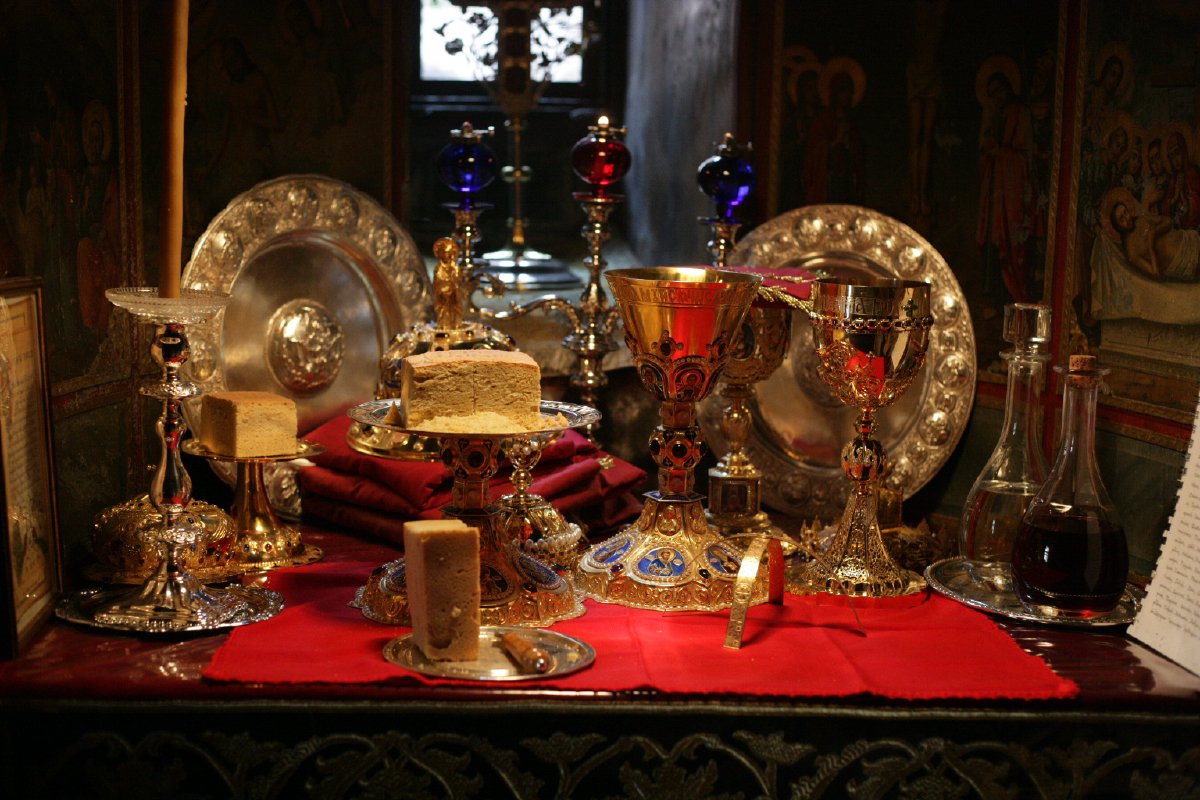
Find here: All the articles with Miraculous Icons of the Theotokos on Mount Athos
Who is commemorated in the portions of the Holy Bread
To the right side of the Prosphoron, there are nine small triangular portions from which the commemorations of angels and all the saints are extracted. These portions are placed to the left of the Lamb.
The saints that are commemorated, include the Prophets, Apostles, Hierarchs, Martyrs, Ascetics, Unmercenaries, the Forefathers of Christ, the Saint of the Day, and the Father of the Church who authored the Liturgy being celebrated.
Although the Second Coming of the Lord has not yet occurred, and the saints have not fully entered into Paradise, they benefit from being commemorated in the Divine Liturgy. Over time, they receive greater divine blessings, and their state will be perfected when they enter the eternal Kingdom.
As noted by Cabasilas, the Holy Eucharist is also offered as thanksgiving to God for the gift of the saints, who serve as paradigms for all Christians. The saints intercede for the faithful, offering guidance and assistance through their prayers.
Find here: Wooden Seals for Prosphora from Mount Athos
Portions for the living and the departed
From other sections of the Prosphora, portions are offered on behalf of the living and the departed members of the Orthodox Church. These portions are placed in front of the Lamb.
Shortly before Holy Communion, during the mingling of the Body and Blood, the celebrant places these portions into the Chalice, praying:
«Wash away, O Lord, the sins of all those here commemorated with Your precious Blood, through the intercessions of the Theotokos and all Your saints. Amen.»
This act signifies the complete cleansing of sins for those commemorated, through the offering of Christ’s sacrifice.
At the beginning of the Proskomide, the priest raises the Offectory to the height of the forehead. This gesture symbolizes the lifting of Jesus Christ on the Cross, where He shed His precious Blood for the salvation of humanity.
Find here: Wooden Seals for Prosphora from Mount Athos
Read here: Prayer for the Departed - What dates are All Souls Day?
Read here: Koliva: the symbolism of the ingredients and how we decorate them
